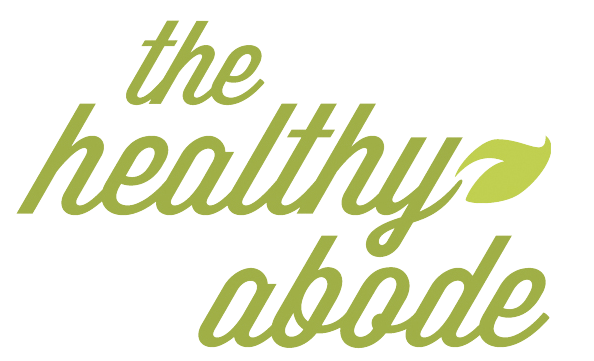Mold Air Testing & Clearance Air Testing
Mold Testing in Toronto
At The Healthy Abode Inc. we perform Mold Air Quality Testing, Mold Surface Testing and Mold Inspections (both Initial and Clearance). We also write Mold Remediation Scopes of Work. Clients include builders, general contractors, demolition contractors, real-estate, designers, engineers, architects, government, health care, schools / daycares, homeowners, property managers and any other person or group who may require such a service in compliance with CCA-82 / IICRC S520. We are fully insured and WSIB compliant. Our reports are certified, insured and compliant to industry standards.
We are able to get you your completed mold report in as little as 1 business day. Contact us for an estimate, 416-901-7527.
Our Services
Mold Air Testing / Clearance Testing
Once remediation has been performed, if necessary, we will return to the property and take a final sample set, called Clearance Mold Testing or Post Remediation Verification Testing. This will verify that the proper removal of mold has in fact taken place, and reassure you that your property no longer possesses the health and structural threat of mold.
What Can You Expect ?
Initial Meeting over Phone
When you contact The Healthy Abode Inc. regarding mold testing / mold inspection, we will knowledgeably answer all of your questions and provide you with a detailed account of our services, if requested.
Visual Inspection
A discussion regarding your mold concerns will assist in determining what testing may be required. A visual inspection of the property is performed in order to establish what areas ought to be sampled.
Our objective when doing a visual inspection is to identify the source(s) of moisture intrusion into your home as well as identify the possible existence of mold.
Pre-Inspection Report
Before beginning the visual inspection and mold testing we will ask some important questions about your home (this is considered the pre-inspection report.)
Written Report of the Results
The laboratory provides a detailed written report of the mold testing samples from your home. This includes the following information: spore identification (which identifies the type of mold found), spore description, certificate of mold analysis (which identifies the actual raw count and spore/m3 count.) This analysis allows us to determine if the levels of mold in your home are elevated or not.
In addition to the laboratory report, The Healthy Abode Inc. provides you with our own mold testing report that explains the lab mold testing report in further detail, as well as outlines all of our notes and observations, including photos and meter results, taken throughout our inspection of your home.
Sampling sent to a Certified Third Party Laboratory
We submit our samples from your mold testing and inspection appointment to a third party laboratory. The turnaround time for the lab is 1-4 business days for all types of mold testing, including Air, Bulk & Swab. All of our samples are properly labeled and submitted with a Chain of Custody form, which allows us to trace possession of the sample form the point of collection to receipt from the lab. This maintains the integrity of your samples.
Verbal Explanation of the Reports
It is very important to us that you feel comfortable with both the laboratory and inspection reports. This is why we will discuss with you the results and attempt to explain them in a manner that satisfies your understanding. At this point we will answer any questions you may have regarding the mold testing, including providing recommendations. If necessary, we will put you in contact with a professional certified remediation firm.
Please note your results are confidential.
Professional Sampling
The Healthy Abode Inc. is qualified to perform any type of necessary sampling in your home. This includes the following sampling techniques, air, surface/bulk (swab/tape-lift) and dust sampling for mold testing. For these procedures, we only perform the necessary sampling and we only use professional equipment.
Purpose:
We will take at least 2 indoor samples (area(s) of concern, one per area of concern/floor) and one mandatory control sample taken just outside/or in an unaffected area of the building. This control sample is used as a point of comparison for all samples taken in the area of concern. The objective is to see if the samples indoors are in fact elevated in spore count when compared to the outdoor sample, or if they are similar. The air testing provides us with both quantity and identification of spores.
In addition to sampling, we will perform an inspection of the areas of concern, which includes using a thermal imaging camera, moisture meters, testing relative humidity.
We're here if you have more questions.
Why us?
We are Water Damage Restoration and Applied Microbial Remediation Technician Certified by The Institute of Inspection, Cleaning and Restoration (WRT & AMRT Certified, IICRC.) – Register Number: 173839. The IICRC is the recognized certifying body for the Inspection, Cleaning and Restoration Industry, now known as TheCleanTrust (www.iicrc.org).
The Healthy Abode Inc. is IAC2 (International Association of Certified Indoor Air Consultants; www.iac2.org) certified – Cert. # IAC2-02-0351. The IAC2 is the non-profit, certifying body for home and building inspectors who have fulfilled certain educational and testing requirements including those in the area of indoor air quality, specifically mold inspections/testing.
IAC2 certified inspectors are all members in good standing of the International Association of Certified Home Inspectors (InterNACHI) which is the largest inspection association in the world, with strict membership requirements (www.nachi.org). IAC2 certified inspectors have all completed strict educational requirements and training.
For mold testing and allergen testing, The Healthy Abode Inc. follows a strict sampling procedure, approved by our laboratory, to obtain all Mold/Allergen samples. We only use professional sampling and testing equipment.
More About This Service
Contact Us
Business Hours
Monday
Tuesday
Wednesday
Thursday
Friday
Saturday
Sunday
8:00am-5:00pm
8:00am-5:00pm
8:00am-5:00pm
8:00am-5:00pm
8:00am-5:00pm
9:00am-1:30pm
Closed

